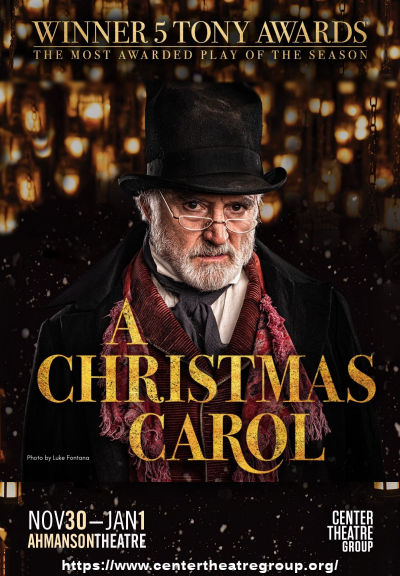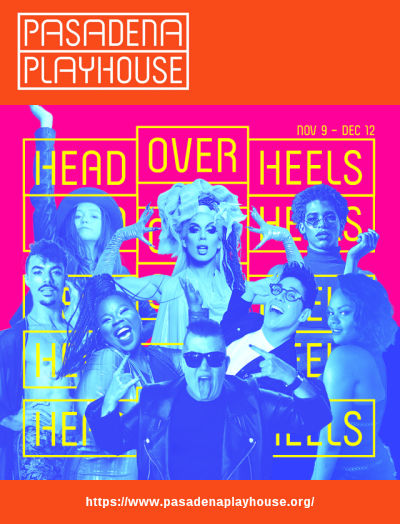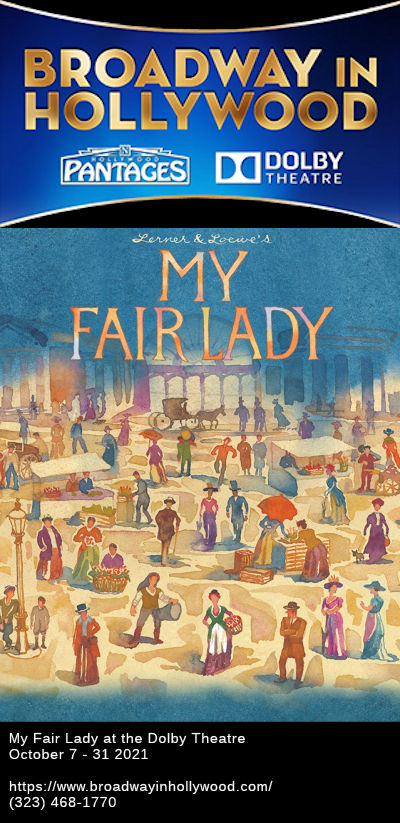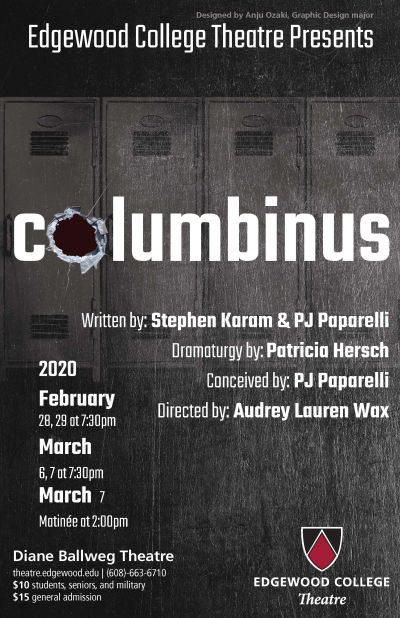
 Men dressing as women on the theatrical stage. Originally, it wasn’t funny at all. Only men could be actors, so women’s parts were were simply played, seriously, by men. But eventually that theatrical contrivance went by the wayside, and men dressing as women became a focal point for humor. The prime example of that which comes to mind is the musical Sugar, based on the movie Some Like It Hot. But there are numerous other cases, from plays like Charley’s Aunt, to the drag sequences in shows currently on the state such as My Fair Lady or even the newer musicals Tootsie and Mrs Doubtfire. These are all men dressing as women in order to get laughs. But where it might have been funny in the past when mores were a bit different, today it isn’t funny. I’ll repeat for the producers in the back: men dressing as women just to bring on the funny is not funny.
Men dressing as women on the theatrical stage. Originally, it wasn’t funny at all. Only men could be actors, so women’s parts were were simply played, seriously, by men. But eventually that theatrical contrivance went by the wayside, and men dressing as women became a focal point for humor. The prime example of that which comes to mind is the musical Sugar, based on the movie Some Like It Hot. But there are numerous other cases, from plays like Charley’s Aunt, to the drag sequences in shows currently on the state such as My Fair Lady or even the newer musicals Tootsie and Mrs Doubtfire. These are all men dressing as women in order to get laughs. But where it might have been funny in the past when mores were a bit different, today it isn’t funny. I’ll repeat for the producers in the back: men dressing as women just to bring on the funny is not funny.
But in 1983, a new musical hit the stage: La Cage Aux Folles (based on the 1973 play). It showcased two men as leads, and featured a man dressing as a women as an alter-ego. Za Za: what we now know as drag performance thanks to the queen extraordinaire, Ru Paul. Although this musical (penned by a gay man) did play on the men-dressing-as-woman schtick, it also introduced an anthem that resonates to this day:
I am what I am
I am my own special creation.
So come take a look,
Give me the hook or the ovation.
It’s my world that I want to take a little pride in,
My world, and it’s not a place I have to hide in.
Life’s not worth a damn,
‘Til you can say, “Hey world, I am what I am.”
I am what I am,
I don’t want praise, I don’t want pity.
I bang my own drum,
Some think it’s noise, I think it’s pretty.
And so what, if I love each feather and each spangle,
Why not try to see things from a diff’rent angle?
Your life is a sham ’til you can shout out loud
I am what I am!
I am what I am
And what I am needs no excuses.
I deal my own deck
Sometimes the ace, sometimes the deuces.
There’s one life, and there’s no return and no deposit;
One life, so it’s time to open up your closet.
Life’s not worth a damn ’til you can say,
“Hey world, I am what I am!”
The anthem of “Be who you are, be true to yourself” is a theme that echoes throughout modern musicals, from stories like Billy Elliot to Kinky Boots to The Prom. This is also an anthem that also is echoed in the show we saw yesterday afternoon at the Ahmanson Theatre (FB): Everyone’s Talking About Jamie.
As a digression: There is also one more branch to the man dressing as woman theme: True trans- and queer characters. These are much harder to treat realistically on the stage, but it has been done. Arguably, Hedwig and the Angry Inch (with a genderqueer lead) is in that canon, as are the secondary characters in Head Over Heels, which we saw recently at the Pasadena Playhouse. Also notable are some of the characters in Bring It On — The Musical, although the gay/queer friend stereotype is a bit problematic. There should be a Bechdel Test equivalent for gay sidekick characters. But I digress from the digression…
Everyone’s Talking About Jamie is based on a documentary film about Jamie Campbell on the BBC called Jamie: Drag Queen at 16. Jamie, who came out at a young age, lived in a lower-to-middle class town in England wanted to attend his prom … dressed as a girl. As with Billy Elliot, he battled the entrenched bigotry in the town but eventually won. Unsurprisingly, the one review of the LA production I read characterized the production as Kinky Boots and Billy Elliot put through a blender. The British producers of the show saw the documentary, and saw a musical in it. The result was Everyone’s Talking About Jamie, which became a production on London’s West End, and then subsequently did a UK tour and it making its American debut at the Ahmanson. The show features music, book, and lyrics by Dan Gillespie Sells Music and Orchestrations and Tom Macrae Book and Lyrics, based on an idea by Jonathan Butterell Director and Co-Writer, inspired by aformentioned Firecracker documentary. The musical was also filmed and is available on Amazon Prime, for those that can’t make it to LA.
So what is the story in Jamie. A lot of it is establishing the situation. Jamie is in Year 11 (US equivalent: 12th grade), and in a career assignment class. He wants to be a drag queen, but his teacher dismisses the idea and shows that his testing predicts he’ll be a forklift driver. Others in the class get similarly dismal prospects. It is in this setting that we meet the rest of the class, including his best friend, Pritti Pasha. Pritti, who excels at maths and wants to be a doctor, is told she’ll only be a secretary. Her path, in many ways, is “B” story that echoes the main journey of Jamie.
Another digression: Notable in this show is a reasonable portrayal of Muslim character in the form of his classmates, Pritti Pasha and Fatimah. The production shows them as realistic people who are just like other teens within their religious confines (as opposed to stereotypes). It also shows the hatred they face and have to battle in the real world.
The establishment of the story continues as we meet Jamie’s mom, Margaret and her best friend Ray. They are encouraging Jamie to live his dreams, and even get him red high heel shoes to wear. We also learn that his father wants nothing to do with him, but his mum is hiding that from him. We see Jamie decide that he wants to bring the drag side of his persona out, encouraged by Pritti. He goes to a drag shop to buy a dress, and meets a former drag queen, Hugo (who was previously the famous Loco Chanelle). Hugo gets Jamie his first dress, and arranges a drag show for Jamie. Encourage, Jamie invites his school. You can guess what happens.
Most of his friend are supportive, but there are those who aren’t The second act of the show deals with this, and the importance of finding and being true to yourself. It has some of the strongest ballads in the show, including “It Means Beautiful” and “He’s My Boy”. The ending, of course, is predetermined: Jamie eventually goes to the prom, in a dress, and finds his drag self.
Prior to the show, I had gotten the album of the West End production, and liked the music. I didn’t, however, know the story. Having now seen the production, a few observations. I’ll note that we weren’t sitting in our usual vantage point: we were off on the side in the handicapped seating (due to my wife’s recent injury). More on that in a minute.
First, the negatives. This is very much a West End production, with heavy accents, fast speech, and UK-specific terminology. This gets lost on the American audience, even with a QR code pointer that doesn’t work to explain the slang. It was made worse by being in the handicapped seats: the crispness of the lyrics and words at that location wasn’t to usual Ahmanson standards. There was a similar problem with the audio of the orchestra — for a while, I thought the orchestra might be pre-recorded, but a list of musicians in the program indicated that wasn’t the case. They were revealed to be on-stage at the end of the show, so it was just poor amplification or our location.
Now, the positives. There were some very strong performances, which I’ll get to as I talk about the actors. I did like the overall message of the show, and I also really enjoyed the secondary characters — perhaps even more so than the main character. The character of Margaret New, Jamie’s mom, was a realistic presentation of a mom that wanted everything for her son, despite the flaws and the difficulties. Her anthem in the second act, “He’s My Boy”, stole the show. Also remarkable was the character of Pritti. It was nice to see a stage portrayal that normalized the Muslim faith and showed the similarities instead of emphasizing the differences. Far too often in America we are presented with the image that the only acceptable faith to have strong religious practices is Christianity; faithful adherents of non-Christian faiths are often played stereotypically. I see this far too often with Jews on stage — ask yourself the last time you saw an Orthodox Jew portrayed as a real person. Pritti was a real teen: she had aspirations, she had desires, but she also was fine living within her faith boundaries. This was made clear both when she indicated she was wearing the hijab not because religion told her to, but because she wanted to. It was her. She also didn’t treat being called a virgin as an insult: she was proud of who she was. It was her character that gave Jamie’s character the strength to be true to himself. As such, both Margaret and Pritti really stole the show.
Another remarkable character was Hugo (Loco Chanelle). He provided the essential difference between drag and trans (which clearly a large number of people do not understand). He made clear that drag is putting on a persona — an alter-ego as a way to truly express a character. It isn’t trans (where your brain sees you as a different gender than your body), nor is it cross dressing (where you aren’t becoming a different persona — you’re yourself, but just enjoying to wear opposite gender clothing). Hugo, in his own way, encouraged Jamie to find his true voice.
The other characters — his school mates, the other drag queens — were drawn much more superficially. They had just the characteristics needed to move the story (Dean – bigotry and bullying; Miss Hedge — administrative rigidity; his dad — rejection) but not much more.
The main secondary characters, however, emphasize that the real story in Jamie wasn’t Jamie’s journey. Yes, he was the main character … but for all the effort, you never see his drag persona on stage. Only glimpses. But where you see the real acceptance of themselves is in Hugo, Margaret, and Pritti. It is their journey that fleshes out this story and makes it something that everyone can see themselves it. It isn’t just drag queens, gays, and trans-folk that need to be true to yourself despite what the world is telling you to be. That’s the message here.
So would I recommend this. If you’re in Los Angeles and are up to being in a large indoor theatre for 3 hours, yes. The theatre was perhaps half full, and companies cannot come back without full audiences. We need to demonstrate that theatre is safe. So wear your N95 mask, get your vaccine and booster shot (which will be required), and go to the theatre. But if you can’t: watch this on Amazon Prime.
One last night, before I go to the individuals: 👏🏼👏🏼👏🏼👏🏼 Kudos to the Ahmanson Theatre for their handicapped services. My wife is temporarily in a wheelchair due to a fall, and is non-weight bearing on her leg until at least March. The Ahmanson made it easy. She called ahead of time, and I had already arranged for wheelchair accessible box seats (in the balcony, vs. the mezzanine, but one does what one can with the seats available). CTG had someone meet us at valet parking (which was only $9). They helped her get to our seats and run the vaccine proof gauntlet. They were there with her walker to help her to the restroom. They helped us back to the car. They made this easy.
So let’s turn to the individual performances:
In the lead position was Layton Williams Jamie New. Williams captured Jamie well and moved well. Whether he was believable as his drag persona Mimi is unknown, as we never really see him as Mimi. But he sang beautifully and seemed to be having quite a bit of fun with the role.
My favorite two performers, if you haven’t figured it out by now, were Melissa Jacques Margaret New and Hiba Elchikhe Pritti Pasha. Jacques just brought down the house with her number “He’s My Boy” as well as “If I Met Myself Again”. Elchikhe’s “It Means Beautiful” was haunting. I thought both performances were strong.
The other strong back character was a dual role by a single actor: Roy Haylock Hugo and his alter ego, Bianca Del Rio Loco Chanelle. We really get to know more about Hugo than we do Del Rio — we just see her briefly as near the drag show. But Haylock brings a reality to Hugo that allows you to see what drag is: an escape from a harsh world, a world where the glitter and the glamour allows one to become something better, something more. That’s an amazing transformation to see. Haylock does a wonderful job in “The Legend of Loco Chanelle”
Among the tertiary characters, there are few standouts. Shabna Gulati Ray provides some good comic moments as Margaret’s best friend; similarly, the three drag queens Leon Craig Sandra Bollock, James Gillan Tray Sophisticay, and David O’Reilly Laika Virgin provide comic relief as they give advice to Jamie. George Sampson Dean Paxton and Cameron Johnson Jamie’s Dad are the catalysts for the conflict: the former as the bully who hates gays, drag queens, and foreigners; the latter as a father who is disappointed in what his son turned out to be. The last standout was Gillian Ford Miss Hedge, who portrayed the inflexible schoolteacher and administrator who didn’t believe in Jamie or his right to be himself in this town. Rounding out the cast were Richard Appiah-Sarpong Cy; Zion Battles Levi; Kazmin Borrer Vicki; Ryan Hughes Mickey; Jodie Knight Fatimah; Harriet Payne Bex; Talia Palamathanan Becca; and Adam Taylor Sayid. Swings (who are vitally important in these days of COVID) are: Rachel Seirian, Simeon Beckett, and Emma Robotham-Hunt. Adam Taylor was the understudy for Jamie.
Wow. That’s the first time I’ve done an actor list without a single reference to AboutTheArtists. This is a 100% imported cast.
Less imported was the on-stage but hidden band (🌴 indicates local; 👑 indicates UK): 👑 Theo Jamieson Musical Supervisor /Director; 👑 Gareth Lieske (FB) Guitars and Cover MD; Dan Hall Bass Guitar and Bass Synth; 🌴 Keith Fiddmont Tenor Sax; 🌴 James Ford III Trumpet, Flugelhorn, Piccolo; 👑 Ali Van Ryne Drums; 👑 Matthew West Percussion. Rounding out the music department was: Dan Gillespie Sells Music and Orchestrations; 🌴 Robert Payne Contractor.
Turning to the production and design team. The production was directed by Jonathan Butterell and choreographed by Katie Prince. Supporting them were Cameron Johnson Resident Director; Simeon Beckett Dance Captain; and Emma Robotham-Hunt Asst. Dance Captain. The direction was good in that the characters were believable as who they were. The dances were strong but not particularly memorable.
The design was interesting. There were three major set pieces: a collection of desks that could be moved around and lighted, almost reminding me of the set of A Christmas Carol; a piece that opened up to provide the New’s apartment (which seemed remarkably easy to move), and a back piece that used projects to provide place –which worked so-so, as the coloring (or should I say colouring) often swallowed the projections. This was all designed by the team of: Anna Fleischle Designer; Lucy Carter Lighting Designer; Luke Halls Video Designer; and executed by Patrick Molony Production Manager. The sound design by Paul Groothuis was generally good, but could use a bit more oomph in the crispness department. Rounding out the production team was: Will Burton CDG Casting Director; Maggie Swing US Production Stage Manager. I’m not listing producers or the tour info. I do, however, give credit to the COVID teamwhich is not enumerated for the tour. On the CTG side, this is Niki Armato Facilities Assistant / COVID Compliance Officer; and a large team of supporting COVID compliance officers: Chase Anderson-Shaw, Monica Greene, Dean Grosbard, Henry Kelly, and Denise Reynoso.
Everyone’s Talking About Jamie continues at the Ahmanson Theatre (FB), COVID permitting, until February 20. Tickets are available through the CTG website. Discount tickets may be available through Goldstar or TodayTix.
❧
Ob. Disclaimer: I am not a trained theatre (or music) critic; I am, however, a regular theatre and music audience member (modulo the COVID break). I’ve been attending live theatre and concerts in Los Angeles since 1972; I’ve been writing up my thoughts on theatre (and the shows I see) since 2004. I do not have theatre training (I’m a computer security specialist), but have learned a lot about theatre over my many years of attending theatre and talking to talented professionals. I pay for all my tickets unless otherwise noted (or I’ll make a donation to the theatre, in lieu of payment). I am not compensated by anyone for doing these writeups in any way, shape, or form. I currently subscribe at Actors Co-op (FB), 5 Star Theatricals (FB), Broadway in Hollywood (FB), the Ahmanson Theatre (FB), and we have a membership at The Pasadena Playhouse (FB). We were subscribing at the Musical Theatre Guild (FB) prior to COVID; they have not yet resumed productions. We have also been subscribers at the Soraya/VPAC (FB), although we are waiting a year before we pick that up again. Through my theatre attendance I have made friends with cast, crew, and producers, but I do strive to not let those relationships color my writing (with one exception: when writing up children’s production, I focus on the positive — one gains nothing except bad karma by raking a child over the coals). I believe in telling you about the shows I see to help you form your opinion; it is up to you to determine the weight you give my writeups. Note to publicists or producers reading this: here’s my policy on taking comp tickets. Bottom-Line: Only for things of nominal value, like Fringe.
Upcoming Shows:
For right now, we’re pretty much sticking with shows that come as part of our subscriptions or are of interest through our memberships. That may change later in 2022. Looking at the first half of 2022: February brings Something Rotten at 5 Star Theatricals (FB) and Marvin’s Room at Actors Co-op (FB). March brings The Lehman Trilogy at the Ahmanson Theatre (FB), Trayf at the Geffen Playhouse (with the TAS Live Theatre group); and Ann at The Pasadena Playhouse (FB). April brings the Southern California Renaissance Faire; and Tootsie at Broadway in Hollywood (FB). May brings Hadestown at at the Ahmanson Theatre (FB). June will see Come From Away at the Ahmanson Theatre (FB) and Pretty Woman at Broadway in Hollywood (FB), plus as much of the Hollywood Fringe Festival as we have the energy for.
As always, I’m keeping my eyes open for interesting productions mentioned on sites such as Better-Lemons, Footlights, as well as productions I see on Goldstar, On Stage 411 or that are sent to me by publicists or the venues themselves. Want to know how to attend lots of live stuff affordably? Take a look at my post on How to attend Live Theatre on a Budget (although I know it is outdated and need to update it). Want to learn about all the great theatre in Southern California? Read my post on how Los Angeles (and its environs) is the best area for theatre in the Country (again, I need to review this for the post-COVID theatre landscape)!




 Silence. Calm. Space. Relaxation.
Silence. Calm. Space. Relaxation.
 Back in late 2018, I happened to listen to
Back in late 2018, I happened to listen to 
 And now two outings to post-pandemic theatre are done. This could get to be a habit.
And now two outings to post-pandemic theatre are done. This could get to be a habit. One of the things that makes this production stand out is its production values and staging. One of the things I like about Cabrillo/5-Star is that it truly lives up to its former slogan “Broadway in your Backyard”. They present Broadway-caliber shows, with Broadway production values, at the regional level. They draw upon top national talent for the leads (and top local talent), and have a great knack of identifying up-and-coming talent from the Southern California talent pool. This production, under the direction of well-known Southern California musical director
One of the things that makes this production stand out is its production values and staging. One of the things I like about Cabrillo/5-Star is that it truly lives up to its former slogan “Broadway in your Backyard”. They present Broadway-caliber shows, with Broadway production values, at the regional level. They draw upon top national talent for the leads (and top local talent), and have a great knack of identifying up-and-coming talent from the Southern California talent pool. This production, under the direction of well-known Southern California musical director 

 Back in
Back in 
 As I indicated in
As I indicated in